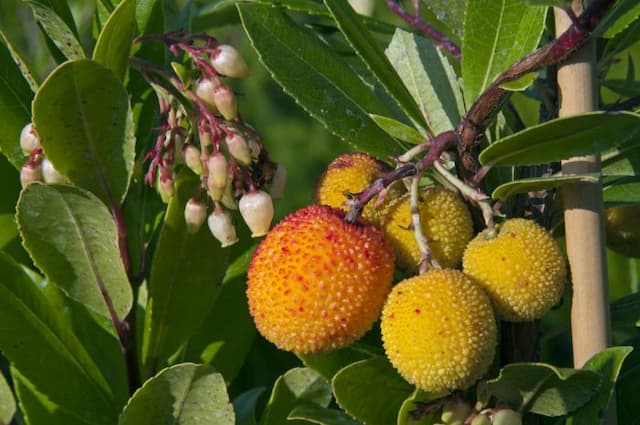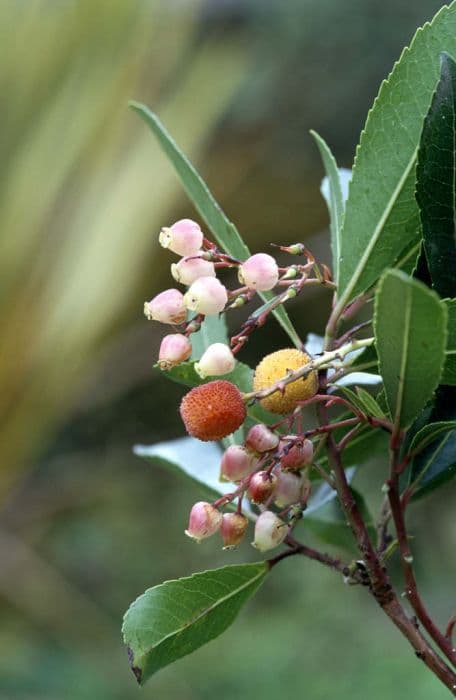Rhododendron 'Loderi Venus' Rhododendron (Loderi Group) 'Loderi Venus'

ABOUT
'Loderi Venus' is a large open evergreen shrub, to 4m tall, with large leaves and very large trusses of lily-like, very fragrant funnel-shaped flowers, to 15cm in width, from late spring to early summer. Opening pale pink from deeper buds, the flowers soon fade to near white with a pale green flash at the base.
About this plant
 Names
NamesSynonyms
Loderi Venus Rhododendron, Loderi Venus.
Common names
Rhododendron (Loderi Group) 'Loderi Venus'.
 Characteristics
CharacteristicsLife cycle
Perennials
Foliage type
Evergreen
Color of leaves
Green
Flower color
Pink
Height
10 feet (3 meters)
Spread
10 feet (3 meters)
Plant type
Shrub
Hardiness zones
7
Native area
Asia
Benefits
 General Benefits
General Benefits- Landscape beautification - Rhododendron 'Loderi Venus' boasts large, fragrant flowers that can enhance the visual appeal of gardens and landscapes.
- Habitat support - It can provide food and shelter for wildlife such as bees, butterflies, and birds, contributing to biodiversity.
- Erosion control - The dense foliage and root system can help stabilize soil and prevent erosion on slopes and banks.
- Seasonal interest - Provides a distinct seasonal display with its blooms in spring, adding aesthetic value to the garden throughout the year.
- Privacy and screening - Its sizable growth can be used for privacy hedges or to screen unsightly areas of a garden.
 Medical Properties
Medical PropertiesThis plant is not used for medical purposes.
 Air-purifying Qualities
Air-purifying QualitiesThis plant is not specifically known for air purifying qualities.
 Other Uses
Other Uses- Rhododendrons' large leaves can be used to create a natural umbrella or shade cover in light rain or strong sunlight.
- The fibrous roots of rhododendrons can be woven into baskets or other crafts by skilled artisans.
- Fall leaves from rhododendrons create a thick mulch which can protect more delicate plants during winter months.
- Dried rhododendron wood, due to its density and fine grain, can be used for making small handles or intricate carving projects.
- The blossoms are sometimes used as a natural dye for fabrics, producing subtle color variations depending on the mordant used.
- Rhododendron flowers can be crystallized with sugar and used as an edible decoration on cakes and desserts.
- With their dense growth habit, rhododendrons can be planted to form a privacy screen or windbreak in gardens and landscapes.
- Bees frequently visit rhododendron flowers for nectar, and the plants thus play a role in supporting local bee populations.
- The thick leaves can be used as packing material for shipping fragile items in lieu of synthetic materials.
- Landscape artists often use rhododendrons as a subject matter for their paintings due to their vibrant colors and lush appearance.
Interesting Facts
 Feng Shui
Feng ShuiThe Rhododendron is not used in Feng Shui practice.
 Zodiac Sign Compitability
Zodiac Sign CompitabilityThe Rhododendron is not used in astrology practice.
 Plant Symbolism
Plant Symbolism- Beware: The Rhododendron, while beautiful, contains toxic substances and historically symbolizes caution or danger.
- Abundance: With its lush, full blooms, the Rhododendron can signify abundance and wealth.
- Beauty and Attraction: The striking appearance of 'Loderi Venus' Rhododendrons symbolizes beauty and can be associated with attracting good things into one's life.
- Homecoming and Hospitality: In certain cultures, the Rhododendron is planted near the front door as a welcoming gesture, hence representing hospitality and homecoming.
- Temperance: The plant's ability to thrive in various conditions is often seen as a symbol of moderation and temperance.
 Water
WaterRhododendrons require even moisture; therefore, the Rhododendron 'Loderi Venus' should be watered thoroughly when the top inch of soil feels dry to the touch. It's generally advised to water this plant with about 1 gallon per week, ensuring the soil stays moist but not waterlogged. During hot or dry weather, water needs can increase to twice a week. It’s crucial to avoid overhead watering which can lead to fungal diseases; instead, water at the base of the plant. Rhododendrons prefer water that is slightly acidic, so using collected rainwater can be beneficial for this plant.
 Light
LightThe Rhododendron 'Loderi Venus' thrives best in dappled shade. It should be planted in a location where it can receive filtered sunlight or morning sun with afternoon shade, as intense direct sunlight can scorch the leaves. An area under tall trees that provide a high canopy is ideal, ensuring the plant is protected from strong midday sun.
 Temperature
TemperatureThe Rhododendron 'Loderi Venus' prefers cool to moderate temperatures and is generally hardy in USDA zones 7 to 9. The ideal temperature range for this plant is between 50°F and 70°F. It can tolerate minimum temperatures as low as 0°F for brief periods but can suffer from heat stress when temperatures consistently rise above 80°F.
 Pruning
PruningPruning Rhododendron 'Loderi Venus' is important for removing dead flowers and encouraging bushier growth. Pruning should be done immediately after flowering to ensure that the following year's bloom is not affected, as the plant sets new flower buds soon after. Lightly shape the plant at this time, being careful not to cut into the old wood, as Rhododendrons can be slow to recover from heavy pruning.
 Cleaning
CleaningAs needed
 Soil
SoilRhododendrons require well-draining, acidic soil with a pH of 4.5 to 6.0. A good mix consists of 50% pine bark, 30% perlite, and 20% peat moss to ensure proper drainage and aeration. Regularly amending with organic matter will help maintain acidity and provide nutrients.
 Repotting
RepottingRhododendrons, including 'Loderi Venus,' typically need repotting every 2 to 3 years, or when the root system outgrows the current pot. It's best done in late winter or early spring before new growth starts.
 Humidity & Misting
Humidity & Misting'Loderi Venus' Rhododendrons thrive in moderate to high humidity levels, ideally between 40% to 60%. Avoid placing them in very dry environments; a surrounding of other plants or a humidity tray can help maintain these conditions.
 Suitable locations
Suitable locationsIndoor
Keep in bright, indirect light, ensure high humidity and acidic soil.
Outdoor
Plant in dappled shade, protect from winds, use acidic, well-drained soil.
Hardiness zone
7-9 USDA
 Life cycle
Life cycleThe Rhododendron 'Loderi Venus,' commonly known as the Loderi Rhododendron, begins its life cycle with seed germination, where the seeds require a well-drained, acidic soil mix and some warmth to sprout. Seedlings gradually develop into young plants, exhibiting the first signs of the species' characteristic large leaves and eventually flowering buds. As the plant matures, it enters a phase of annual growth and flowering, typically in spring, where large, fragrant flowers emerge in shades of pink or white. After blooming, seeds are formed and dispersed if pollinated, continuing the reproductive cycle. Rhododendrons can live for many years, with some specimens reaching significant ages of several decades, during which they maintain their growth and blooming cycles. Pruning and maintenance of plant health in the mature phase are crucial for sustained vigor and floral display.
 Propogation
PropogationPropogation time
Spring-Early Summer
Propogation: Rhododendron 'Loderi Venus', an enchanting variety from the Loderi Group, is generally propagated through semi-hardwood cuttings, which is the most popular method for many rhododendron cultivars. The ideal time to take these cuttings is from late summer to early fall when the new growth has begun to mature but hasn't yet become fully hardened. To start, a gardener should select healthy, disease-free shoots and cut lengths of about 4 to 6 inches (10 to 15 cm), making a clean cut just below a leaf node. The lower leaves are removed, and the base of the cutting is dipped in a rooting hormone to encourage root development. Then, the prepared cutting is inserted into a mix of peat and perlite or a similar free-draining propagation medium. The cuttings need to be kept under controlled conditions with high humidity, such as under a plastic cover, and at a consistent temperature of around 65 to 75 degrees Fahrenheit (approximately 18 to 24 degrees Celsius). Roots typically develop within several weeks to a few months, after which they can eventually be potted on and grown until they are ready to be transplanted into the garden.









